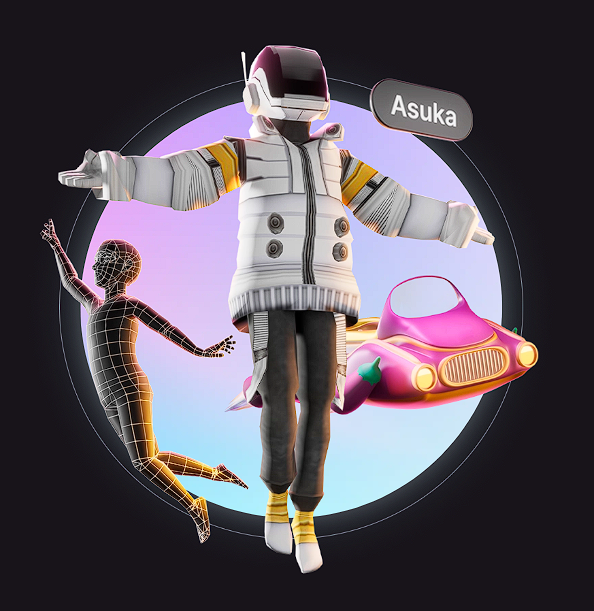NFTs in Gaming: Unlocking New Revenue Streams for Developers
- Juan Aja
- Apr 15, 2024
- 3 min read
Updated: Apr 23, 2024

In the dynamic gaming landscape, Non-Fungible Tokens (NFTs) have emerged as a groundbreaking force, transforming how players interact with in-game assets and how developers monetize their creations.
This article explores the pivotal role of NFTs in gaming, shedding light on how they unlock novel revenue streams for developers while enhancing gamer experiences. For technologists, gaming industry professionals, and blockchain enthusiasts, understanding this intersection is not just about digital assets; it's about redefining the economic landscape of virtual worlds.
I. The Rise of NFTs in Gaming
Defining NFTs:
NFTs are unique digital assets stored on blockchain networks. What sets them apart is their indivisibility and authenticity, making each token distinct. In gaming, NFTs can represent in-game items, real estate, characters, or entire game worlds.
Enhancing Ownership:
NFTs introduce a paradigm shift in ownership. Instead of possessing virtual items, players can now own verifiable digital assets. This sense of ownership is foundational to the appeal of NFTs in gaming.
II. NFTs as a Monetization Mechanism
Creating Scarce and Valuable Items:
One key advantage of using NFTs in gaming is the ability to create scarcity and value. Developers can issue limited editions of in-game assets as NFTs, allowing players to own exclusive items with real-world value.
Monetizing Creativity:
For developers, NFTs provide a direct monetization channel for creative content. Whether it's unique character skins, rare weapons, or special abilities, each NFT represents an opportunity for developers to generate revenue.
III. Examples of Successful NFT Implementations
1. Axie Infinity:

Axie Infinity, a blockchain-based game, has become a poster child for successful NFT integration. Players can own, buy, and sell Axies – cute creatures within the game – as NFTs. The rarity and utility of these creatures make them valuable assets, and their ownership is recorded on the Ethereum blockchain.

2. Decentraland:
Decentraland is a virtual world built on the Ethereum blockchain where players can buy, sell, and build on virtual land as NFTs. The ownership of these virtual parcels is recorded on the blockchain, enabling users to monetize their creations or trade virtual real estate.

NBA Top Shot is an NFT platform that turns iconic basketball moments into digital collectibles. Each "moment" is minted as an NFT, creating a unique and tradable asset. This innovative approach to sports memorabilia has garnered significant attention and demonstrated the potential of NFTs beyond traditional gaming contexts.
IV. Challenges and Considerations
Scalability and Energy Consumption:
As with any technological advancement, challenges exist. Scalability and the environmental impact of blockchain networks, often criticized for their energy consumption, are points of consideration. However, ongoing developments in blockchain technology aim to address these concerns.
Ensuring Genuine Scarcity:
The success of NFTs relies on the genuine scarcity of digital assets. Developers must carefully balance the issuance of limited editions to maintain the rarity and value of NFTs. Further, there has to be user appeal or demand for these assets. Otherwise, they risk becoming very scarce but worthless lines of code in a smart contract.
V. Opportunities for Developers
Player-Driven Economies:
NFTs empower players to contribute to the virtual economy. Developers can create ecosystems where players actively shape the market by using, trading, buying, and selling NFTs.
Unlocking New Revenue Streams:
For developers, NFTs offer diversified revenue streams. Beyond traditional game sales, developers can earn royalties from secondary market transactions, creating ongoing revenue from popular in-game assets.
VI. Looking Ahead: The Future of NFTs in Gaming
Integration in Mainstream Games:
As blockchain technology matures and user adoption grows, we can expect a more widespread integration of NFTs in mainstream gaming; this will redefine revenue models and influence game design and player engagement strategies.
Interoperability Across Games:
The future holds the promise of interoperability, where NFTs earned or purchased in one game can have utility in others. This interconnected ecosystem could further enhance the value proposition for players and developers alike.
VII. Conclusion
In conclusion, NFTs transform gaming, redefining how players perceive and engage with virtual assets. The examples of Axie Infinity, Decentraland, and NBA Top Shot showcase the diverse applications of NFTs, from virtual creatures to digital real estate and iconic sports moments. As developers continue to explore the potential of NFTs, the gaming industry stands on the cusp of a new era – one where ownership, creativity, and monetization converge in virtual worlds.




Comments